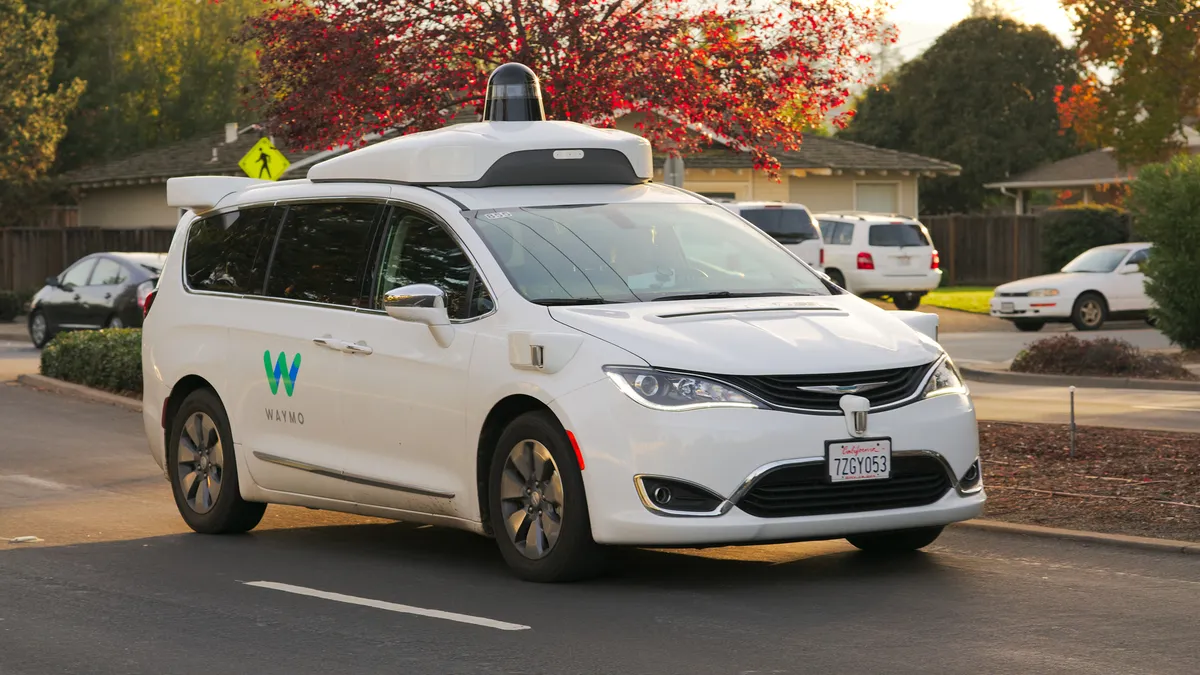Dive Brief:
- Waymo has released its Open Dataset comprised of sensor data collected by its autonomous vehicles (AVs) to aid researchers.
- It collected the data from 1,000 driving segments, each consisting of 20 seconds of continuous driving. Each segment contains data from five Waymo LiDAR sensors and five front- and side-facing cameras. The captured objects — vehicles, pedestrians, cyclists and signage — are labeled.
- The goal of sharing the data is to encourage researchers to work on different areas of artificial intelligence (AI) such as 2D and 3D perception, domain adaptation, scene understanding and behavior prediction, a Waymo spokesperson told Smart Cities Dive in an email. The data is intended to help improve self-driving vehicles, but also to assist related sectors such as computer vision and robotics.
Dive Insight:
The data released was collected in urban and suburban areas across Phoenix, AZ; Kirkland, WA; Mountain View, CA; and San Francisco. It covers a variety of driving conditions including dawn, dusk, sun and rain.
Waymo indicates the data release is to advance research. The company applies the term "research" rather loosely: The spokesperson said the data is free and available to anyone for non-commercial use.
It's an interesting approach, considering Waymo historically has been rather tight-lipped about its data, presumably to maintain a competitive advantage. The company famously became entangled in a high-profile legal battle with Uber, claiming the mobility company stole Waymo's intellectual property related to LiDAR, which many say is a key AV technology.
Other companies working on AV technologies have taken the open source approach, too. Aptiv made waves as one of the first big companies to release sensor data in March. In July, Lyft released more than 55,000 3D frames of footage for researchers to use.
One thing the releases all share is that only some information is made public each time. Companies want to protect their proprietary work and remain competitive, but that's less probable with a full data dump. AVs collect enormous amounts of data each day and only small snippets are released publicly.
AVs are intricate and the algorithms and technologies being tested still are in their nascent stages. Developers might hit road blocks or lack certain capabilities and hope researchers using their information could lead to industry breakthroughs.












